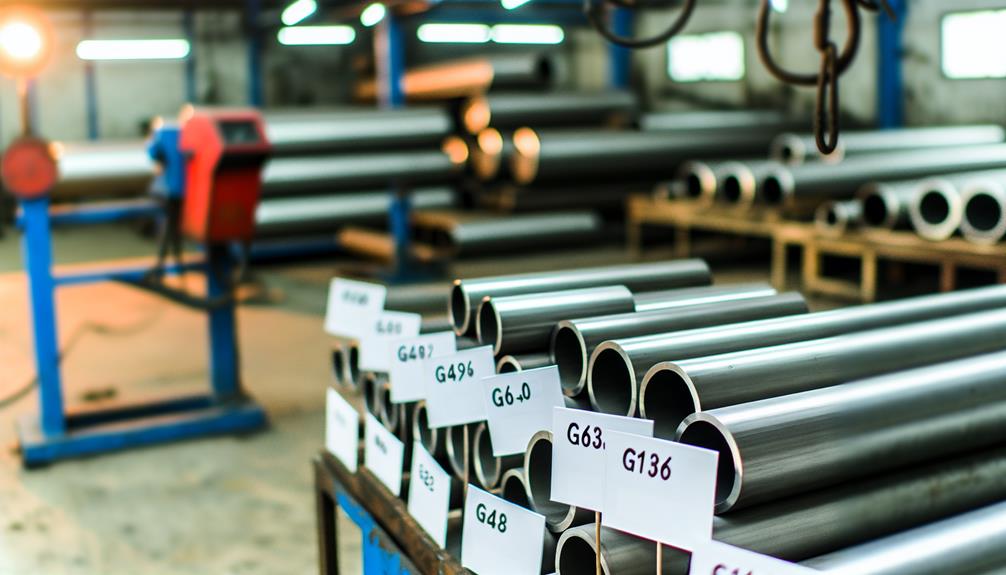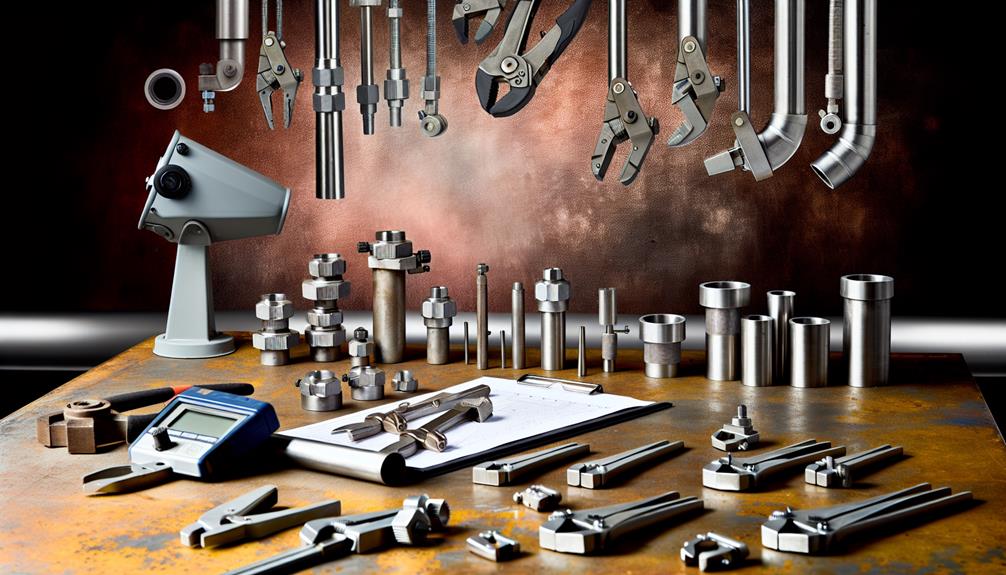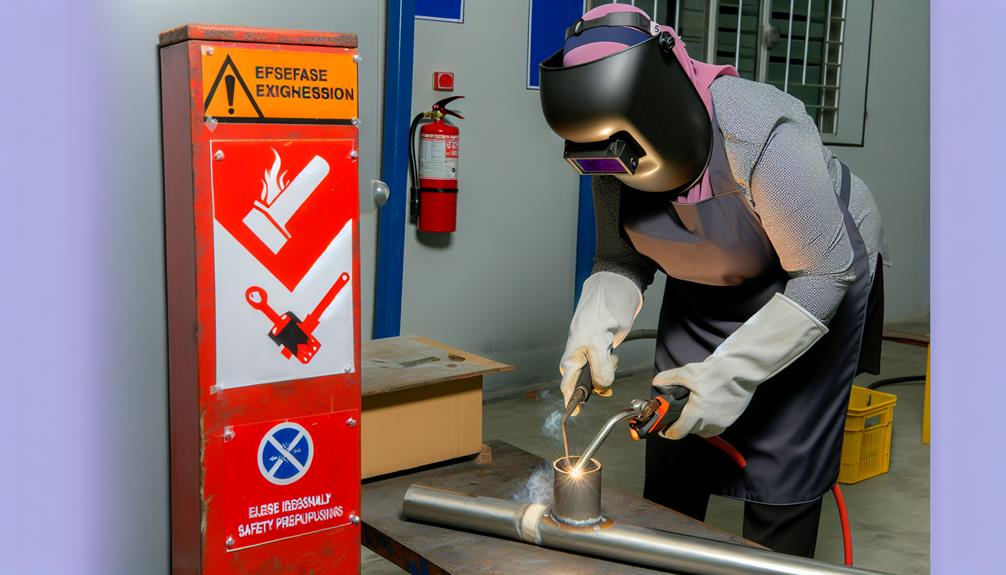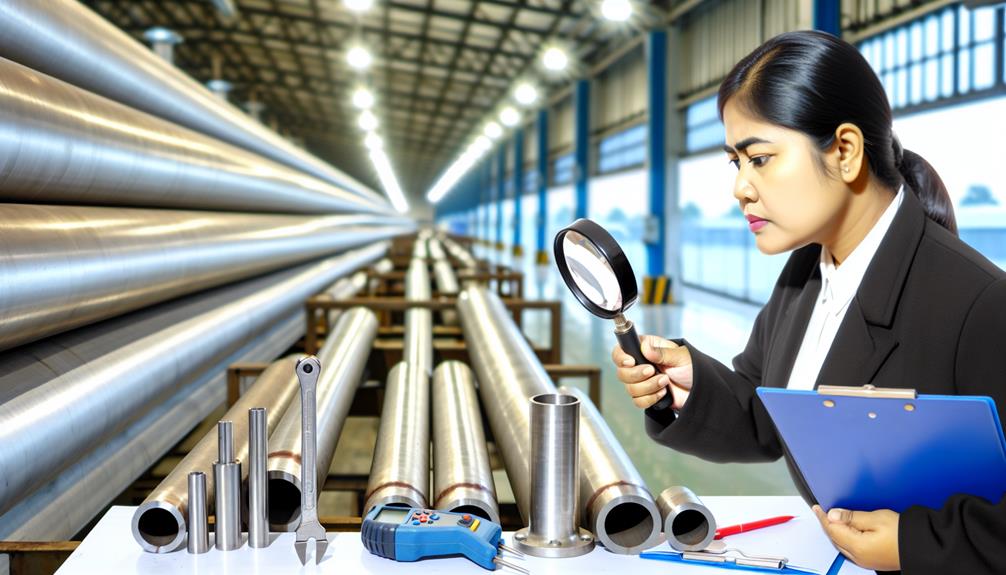Stainless steel pipe welding demands a meticulous understanding of standards and practices to guarantee both safety and efficacy in their application. Among professionals, there is an ongoing debate regarding the most suitable welding methods for different grades of stainless steel and the impact of these methods on the durability and integrity of the welds. As we explore the nuances of stainless steel pipe welding standards, such as the AWS D1.6 and ASME Section IX, the evolving role of advanced technologies and techniques becomes increasingly crucial. How these standards integrate with modern welding practices not only shapes the quality of installations but also influences future amendments to regulatory frameworks.

Stainless steel, categorized into various grades based on its composition and properties, is essential for selecting the appropriate type for specific welding applications. Each grade's unique chemical makeup influences key characteristics such as corrosion resistance and thermal properties, which are important in high-demand environments.
For instance, the addition of chromium and nickel in austenitic stainless steels enhances their ability to resist oxidization and corrosion, making them suitable for use in marine or acidic environments.
The choice of a suitable stainless steel grade also hinges on its thermal properties, which determine the material's behavior under high temperatures. Grades with higher chromium and nickel content generally exhibit better thermal stability and lower thermal expansion rates. This stability is critical during the welding process, where high temperatures are applied. Inconsistent thermal expansion can lead to welding stress and potential structural failures, emphasizing the need for precise grade selection.
Furthermore, the ferritic grades, typically lower in cost due to less nickel content, offer moderate corrosion resistance but superior thermal conductivity, making them ideal for applications where heat transfer is critical.
Understanding the detailed properties of stainless steel grades allows for optimized performance and longevity of the welded structures.
Related:
Welding standards are essential in the fabrication and maintenance of stainless steel pipes, ensuring the highest levels of quality, safety, and reliability. These standards provide comprehensive guidelines covering welding processes, materials, qualifications, and testing methods. Below is an overview of some of the key welding standards relevant to stainless steel pipe welding.
The ASME standards are critical in industries where the integrity of welded structures is paramount, such as in pressure vessels and piping systems.
The AWS standards are widely recognized for promoting the quality and reliability of welded structures through rigorous guidelines.
ISO standards are globally recognized and provide a harmonized approach to welding practices across different countries and industries.
CEN standards ensure consistency and quality in welding practices across Europe, providing detailed guidelines for various welding aspects.
Adhering to these key welding standards is crucial for achieving high-quality, safe, and reliable stainless steel pipe welds. These standards provide a robust framework for welders and fabricators, ensuring that their work meets the stringent requirements of various industries. By following these guidelines, professionals can enhance the performance and longevity of stainless steel welded structures, maintaining excellence in their field.
Related Article: Stainless Steel Pipe Welding Procedure Specification

Proper pre-welding preparation is essential for achieving the best weld quality and integrity in stainless steel pipe welding. This phase sets the foundational conditions that can greatly influence the overall success of the welding process. Key aspects such as material cleanliness and joint alignment are paramount.
Implementing meticulous pre-welding preparation practices directly influences the structural integrity and performance of the welded stainless steel pipes, making it an important step not to be overlooked.
In the domain of stainless steel pipe welding, three primary methods are widely recognized for their effectiveness and adaptability: TIG, MIG, and Stick welding.
Each technique offers distinct advantages depending on the specific requirements of the welding project, including factors such as joint configuration, base metal composition, and required strength of the weld.
TIG welding is particularly noted for its precision and high-quality finish, MIG welding for its versatility and speed, and Stick welding for its simplicity and effectiveness in outdoor conditions.
TIG welding, characterized by its use of a tungsten electrode and inert gas, is a predominant method for achieving high-quality, precise welds on stainless steel pipes. This technique is particularly valued for its ability to produce clean, strong joints without the need for additional filler material. Mastery of TIG welding requires a deep understanding of two key elements: gas control and torch angle.
Proper gas control is essential in shielding the weld area from atmospheric contaminants, thereby preventing oxidation and ensuring the integrity of the weld. The flow rate and type of inert gas, typically argon or a helium-argon mixture, must be meticulously managed to create an ideal environment for the welding process.
The angle of the torch plays a significant role in the penetration and direction of the weld. A precise torch angle helps in controlling the heat input and distribution, which is critical in avoiding warpage and ensuring a uniform weld bead.
Visualize a skilled welder adjusting the flow meter, achieving a perfect gas shield around the stainless steel pipe.
Imagine the steady hand necessary to maintain the ideal torch angle, ensuring consistent weld quality.
Consider the intense focus required to manipulate these variables simultaneously, optimizing the TIG welding process.
Recommended:
MIG welding, distinguished by its versatility and efficiency, is another prevalent method for joining stainless steel pipes in various industrial applications. This technique leverages a consumable wire electrode and shielding gas, which facilitates the creation of strong, clean welds suitable for both thin and thick sections of piping.
Critical to the success of MIG welding is the meticulous selection of MIG settings and wire selection, tailored to the specific requirements of the stainless steel grade and the pipe dimensions. The MIG settings must be finely tuned to control heat input, which affects the weld bead quality and mitigates the risk of warping or weakening the pipe. Typically, a higher voltage is paired with a faster wire feed speed to achieve deeper penetration and a stable arc.
Moreover, wire selection plays a pivotal role. The choice of wire—often an austenitic stainless steel variant like 308L for its corrosion resistance and compatibility with most stainless steels—directly influences the mechanical properties of the weld. Using an incorrect wire type can lead to inadequate corrosion resistance or mechanical failure under operational stresses.
Therefore, precise control over these variables is essential for ensuring the integrity and longevity of the welded stainless steel pipes.
Why is stick welding, also known as Shielded Metal Arc Welding (SMAW), a preferred method for joining stainless steel pipes in various environments?
Stick welding offers robust versatility and simplicity, making it highly effective for both indoor and outdoor operations, particularly where other welding methods might falter due to environmental conditions. The process's adaptability is enhanced by strategic electrode selection, which allows for customization based on the specific metallurgical properties of the stainless steel grades involved.
Additionally, amperage control during SMAW plays a pivotal role in achieving the best fusion of the joint, ensuring the integrity and strength of the weld under varying operational stresses.
Consider the following imagery to appreciate the efficacy of stick welding in stainless steel pipe applications:
These elements highlight why SMAW remains a steadfast method in stainless steel pipe welding, providing reliability through meticulous electrode selection and amperage control.
Recommended:

To guarantee the safety of personnel during stainless steel pipe welding, strict adherence to established safety protocols is essential. Key among these protocols is the use of personal protective equipment (PPE) to shield welders from the multifarious hazards inherent in their work environment. PPE such as welding helmets with appropriate filter shades, flame-resistant clothing, and gloves specifically designed for welding applications are vital. These items protect against ultraviolet and infrared radiation, sparks, and extreme heat.
Environmental hazards also play a significant role in welding safety. Proper ventilation is necessary to avoid the inhalation of dangerous fumes and gases produced during welding processes. Awareness and control of these environmental factors are critical to ensuring a safe working atmosphere.
| Category | Details |
|---|---|
| Personal Protection | Helmets, gloves, aprons, and eye protection to guard against heat, sparks, and radiation. |
| Environmental Control | Adequate ventilation systems to extract harmful fumes and gases. |
| Training and Compliance | Regular training on safety standards and compliance with legal and industrial regulations. |
| Emergency Procedures | Established and practiced protocols for handling accidents and injuries. |
Adhering to these standards not only protects the health of the welders but also enhances the overall quality and consistency of the welding work.
Selecting the appropriate welding equipment is essential for achieving the best results in stainless steel pipe welding. The meticulous choice of welding torch types and electrode selection greatly impacts the quality and precision of the welds. A detailed understanding of the specific applications and environments for which the welding will be performed is vital.
When considering welding equipment, focus on:
Each component must be carefully evaluated to maintain the high standards required in stainless steel pipe welding.

Post-welding inspection protocols are vital in ensuring the structural integrity and quality of stainless steel pipe welds. Following the completion of welding, these procedures must be thoroughly followed in order to detect any irregularities that could compromise the pipeline's performance.
Among the most trusted techniques in this inspection phase are radiographic testing and ultrasonic examination.
Radiographic testing (RT) employs X-rays or gamma rays to produce images of the weld, revealing hidden flaws such as cracks, voids, or inclusions within the internal structure. This method provides a permanent record and is highly valued for its detailed accuracy and the ability to inspect complex geometries. It is important, however, to interpret radiographs with high precision to avoid misjudgments that could lead to unwarranted reworks or approvals.
Ultrasonic examination (UT), on the other hand, utilizes high-frequency sound waves to detect discrepancies in the weld. This technique is advantageous for its speed and the provision of real-time results, allowing for immediate assessment and decision-making. UT is particularly effective in identifying subsurface anomalies and is capable of providing quantitative data about defect characteristics.
Both methods are essential in a thorough post-welding inspection protocol, ensuring that only welds of the highest quality are implemented in critical applications.
Identifying and addressing welding defects in stainless steel pipes is a critical step in maintaining pipeline integrity and performance. It requires a rigorous application of defect analysis methodologies to accurately diagnose issues, followed by the implementation of precise weld repair strategies. These two processes are essential in ensuring that repaired sections meet or exceed the original specifications and standards.
These steps, when executed systematically, provide a robust framework for handling defects efficiently. By embracing these methodologies, organizations can significantly enhance the reliability and longevity of their stainless steel pipelines, thereby maintaining operational excellence and safety standards.
Recommended: Stainless Steel Welding Issues
Weather greatly influences stainless steel pipe welding; temperature fluctuations can impact weld integrity and cooling rates, while varying humidity levels may lead to increased corrosion risks and compromise weld quality and durability.
Yes, stainless steel pipes can be welded underwater using specialized welding techniques. Strict compliance with safety protocols is crucial to guarantee the integrity of the weld and the safety of the operation.
Stainless steel welding can negatively impact the environment through welding emissions which include gases and particulates. Additionally, concerns around material sustainability relate to the energy-intensive production processes and resource depletion involved in steel manufacturing.
Welding can alter stainless steel's molecular landscape, where heat accumulation affects corrosion resistance. Precise welding techniques are essential to maintaining integrity, as improper heat control can lead to compromised protective oxide layers.
Alternatives to welding for joining stainless steel pipes include mechanical coupling and adhesive bonding. These methods provide controlled, precise unions without compromising the material's inherent corrosion resistance.
Blog Series:
To sum up, meticulous adherence to stainless steel pipe welding standards is the cornerstone in safeguarding the structural integrity and performance of welded assemblies.
As the guide illuminates, from choosing the appropriate grade of stainless steel to mastering advanced welding technologies, each step is a link in a chain of quality assurance.
Professionals armed with this knowledge guarantee that their welds not only meet but exceed the rigorous demands of modern engineering applications.
